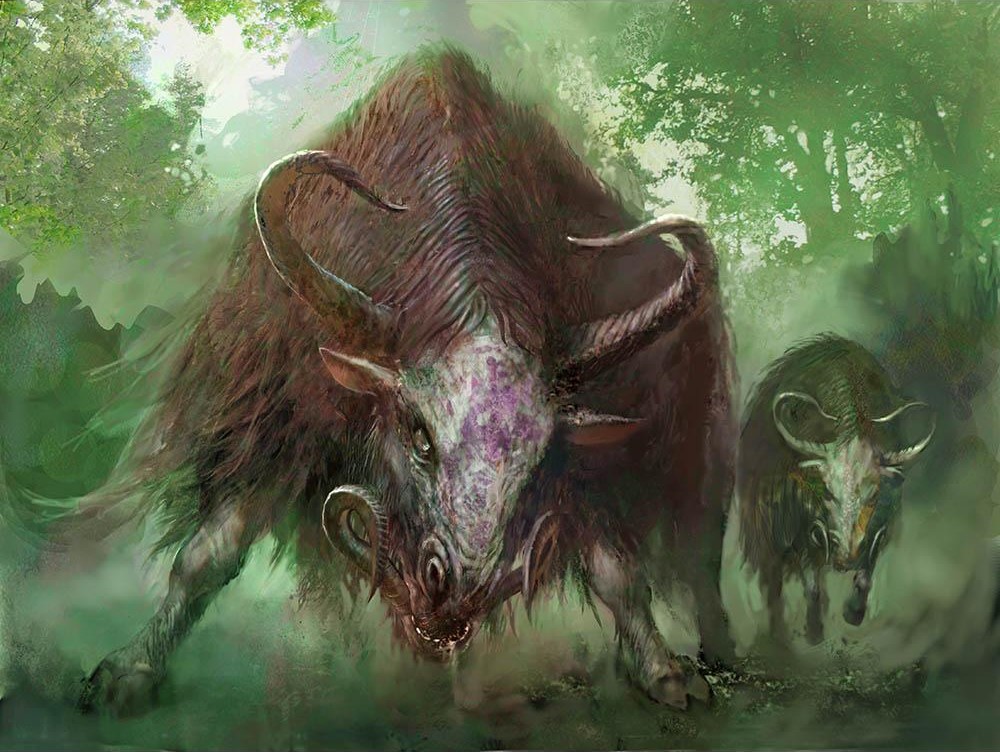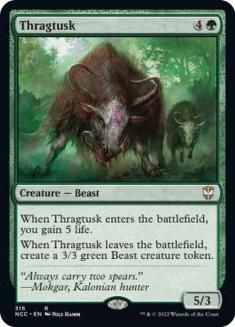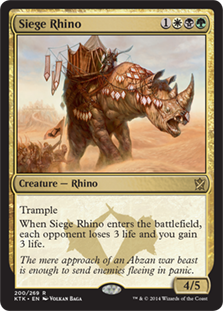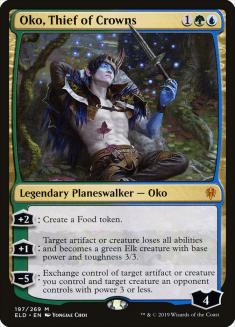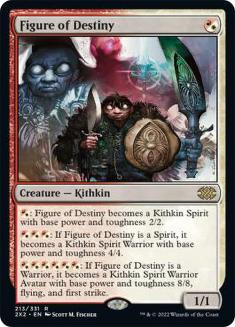Hello and welcome to this week’s installment of Sullivan’s Satchel. I’m back in Denver after a weekend of covering Standard, Pioneer, and Modern in Richmond, and I’ll be departing for Philadelphia in a few days for more of the same. All three formats appear to be in reasonable shape, more or less. Maybe Modern is a little long on Primeval Titan, and maybe Dimir Inverter had a troubling level of representation in the weekend’s events. From my perspective, these issues (such as they are) seemed more likely to be in the realm of “things people can successfully metagame against” rather than “the new normal.” Regardless, I think there is a lot at stake in the next few weeks to see if the formats are sustainable as they are or if some intervention is required. Thank you as always to everyone who sent in questions (possibly inspired by this new ad copy:
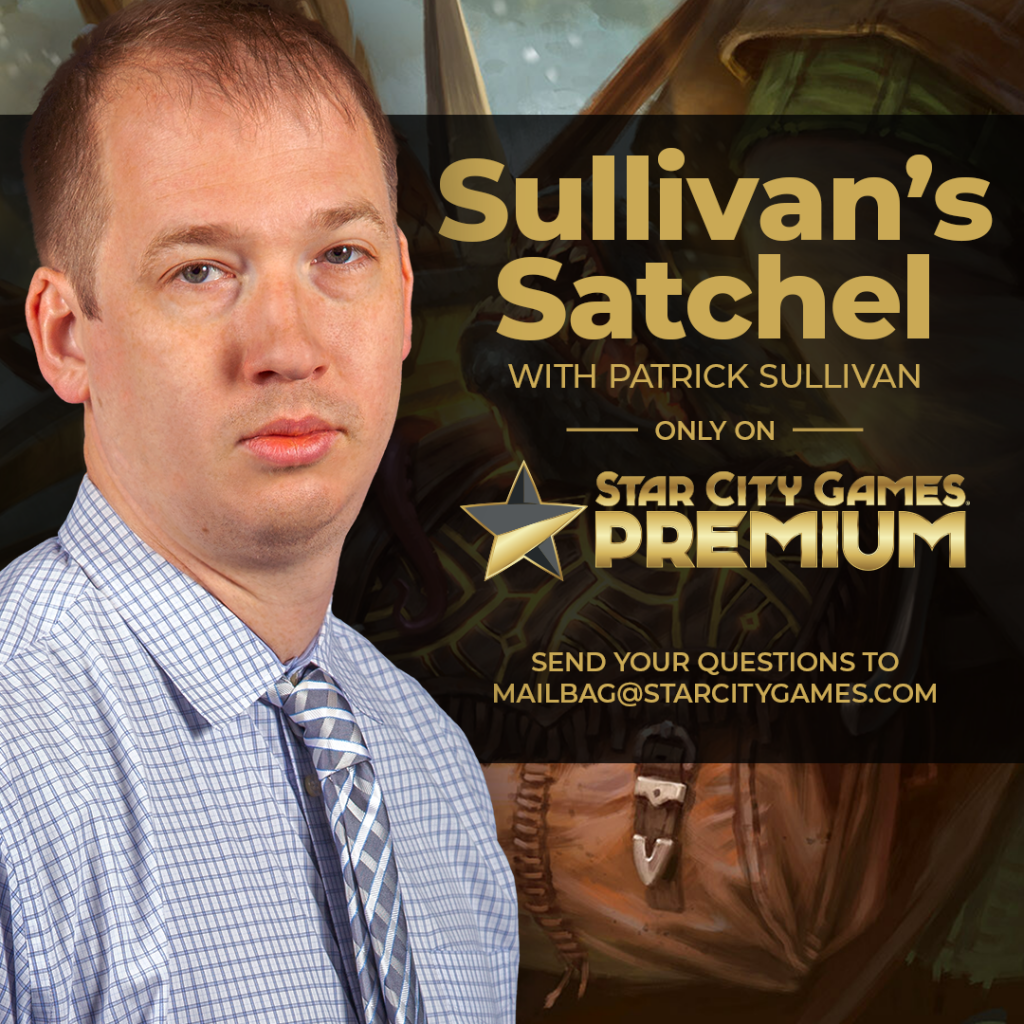
As always, send in your questions to [email protected]. With that,
JMart wonders:
I watch a lot of your coverage. You seem to hate all the powerful cards. What powerful cards do you like?
I hear some variation of this a lot, and people often come up to me and complain about some card they lost to and make some “ha, ha, good gameplay” attempt at a “joke” under the assumption that I’m going to agree that the card they lost to is some sort of mistake. I often disagree, even though I’ve been critical of some of the big bets Wizards of the Coast (WotC) has made over the years.
Patrick Chapin has said a few times that “the opposite of fun isn’t pain, it’s boredom” and I think that’s a perfect short summary of games. If you think of most single-player games, the goal isn’t to make things too easy or too hard, but to put a challenge in front of the user that they can defeat with some blend of skill, experience, and practice. The extreme ends of the spectrum aren’t fun precisely because they are boring; it is not fun to try to solve challenges that are either trivial or unsolvable.
I think the same holds true for Magic: try to avoid environments and designs that are conducive to boredom. Part of Magic’s longevity has to do with new sets coming out; besides it being lucrative, it is a natural antagonist to boredom. Part of it has to do with different formats (both within a competitive framework along with more casual offerings). Even if you aren’t feeling Standard you can go play Modern, or draft, or dust off your Commander deck.
But what does that mean for individual designs? Or how to manage a format? New sets as an elixir to fight boredom only work if some of the cards are good enough to inspire new strategies and decks. But the very best cards, though maybe novel at first, eventually contribute to some degree of boredom most of the time; they act as barriers to new cards becoming considerations. And what about the games themselves? Not everyone has the same tastes; one person’s boredom could be someone else’s fun.
- Rate
Overall rate matters. Even the best designs get boring when they show up and determine the outcome of games past a certain point. It is probably the most powerful argument against reprinting Lightning Bolt in Standard, as an example. Even if the gameplay is very good (I believe it is), two years of it in a relatively low-powered format risks repetitive decklists and play.
- Varied terms of engagement
There is a reason that “no discard, no LD, no counterspells” is a rallying cry in Magic Online (MTGO) casual rooms. Even if you can beat these strategies, they give off a sense that the methods of engaging with them are limited. I suppose all of them are broadly weak to cheap cards, and all of them are vulnerable to cards that specifically call out their exclusion (Exquisite Firecraft, Obstinate Baloth, etc.), but many cards, no matter how different their text box, all interact the same way: you can’t cast them, or they don’t resolve. It’s not fun to think about cards through such a narrow scope.
I think Standard formats are at their best when some of the pillars permit varied forms of engagement. Thragtusk comes to mind as a good example – you can go under (cheap stuff, try to win the game before it resolves); over (do bigger, more powerful stuff); around (make the game about something that isn’t managing the battlefield); and through (play with Thragtusk and gear your deck towards having an advantage against similar decks). These cards provide the architecture for a diverse ecosystem where other strategies have natural purpose – as random examples, Goblin Guide, Selfless Spirit, Terminate, and Cancel are simultaneously good and bad against Thragtusk, and the details matter, so evolution from all decks is likely to occur.
I think it is generally wise to do this with creatures instead of spells because the game engine provides an incentive to play with zero creatures, if possible – you get a significant advantage from blanking opposing removal spells almost no matter what the rest of the details are. Once you make a creature good enough that even control decks are interested in playing it (like Thragtusk), that incentive goes away and they are likely to play with more creatures beyond just Thragtusk, since they no longer can zero out opposing cards.
- Inefficient distribution of power
Not all powerful cards are powerful in the same way. Going back to the Thragtusk example, you get a bunch of stuff, but it is a mix – a body that can attack and block, but not all that well in relation to five-drops you could play that just attack and block. It is good against removal, but not as good as a creature with hexproof. You gain some life, but you can get a lot more for much less mana, if that’s your thing.
Since you’re being paid out in so many different currencies, you are more likely to optimize the card by actually building a deck rather than just playing the best stuff on a curve. Siege Rhino is another good example of this (the type of deck that wants a 4/5 trampler is usually different from the deck that wants a drain for three), and it was reflected in the various builds of Abzan – even the most controlling builds had some interest in combat from time to time, and even the most aggressive builds acknowledged the late-game as something to play towards some amount of the time.
I think this is where Oko, Thief of Crowns failed the most – the distribution of abilities is about as efficient as you can ask for, along with the rate being outrageous and the terms of engagement being extremely narrow. It is much more likely to just be a thing that gets played on curve, on rate, rather than something that you build a deck around in any meaningful way.
None of this is an exact science, and since rate is part of the equation, there are lines around even the best designs – it is not unreasonable to think that Standard formats with Siege Rhino and Thragtusk may have been better served with those cards being slightly weaker, in spite of how much praise I just gave them. But I try to think about the problems using these heuristics.
Michael Dunaieff wants to know:
Hey Patrick,
I’ve been delighted by your regalings of expert sportsmanship in your home state, of classy maneuvers such as the Dead Shake and the Shovel. I was wondering if you could put together a top (10) list of greatest examples of Jersey style spell slinging. Thanks.
So, what follows is a glossary of terms. This is by no means exhaustive, nor can New Jersey 2001 claim the credit for each and every one of these moves. But, in an effort to give some insight into the crucible which forged me, these are all real things that happened.
The Dead Shake: After losing a match, sticking out your hand and saying “good game” or “you played well” and then keeping your hand in a handshake pose, but making it go limp and motionless after your opponent gives you a shake. This might not sound like much but I assure you it is a universal affront, applicable outside of Magic.
The Super Shake: Requires knowing the other person is about to Dead Shake you. The Super Shake is squeezing the Dead Shake’d hand as hard as you can. This is quite painful, but not so much if the other person shakes your hand as normal. Considered a humiliation to Super Shake someone shaking your hand normally.
The Shovel: When playing a card that destroys multiple opposing cards (say, Wrath of God, more commonly Shower of Coals in that era), putting your sweeper underneath the opposing cards in question and then carrying them together on top of your card before dumping them into the opposing player’s graveyard.
Two Scoops AKA The Raisin Bran: A way of describing a concession in frustration when the party in question puts their hand of cards into both hands and uses them to shovel up their own battlefield.
IRL DC: When playing a non-sanctioned match for stakes, asking to leave the match right before you’re about to lose (say, to use the bathroom) and then just getting into your car and going home. Have a friend report back to you on how long your opponent sat and waited.
The Hancock: Defeating a player who had a playmat (unforgivable casual sin during this time) with at least one PTQ Top 8 pin on their mat. Try to put the match slip on top of their pin; your opponent was likely to puncture or even destroy the match slip and/or their pen trying to sign if they didn’t move it first.
I believe the following are West Coast in origin:
The Grid: Putting your cards in a completely random orientation around the battlefield.
The Cali Box Out: A response to The Grid (see Dead Shake/Super Shake dynamics above) in which you place your cards around the cards of your opponent.
I’m sure there are more I’m forgetting; many of the slangs I learned were just ways of describing various cheats. Even though I have nostalgia for my era and believe very deeply that the best player now couldn’t beat the twelfth-best player at my local store from twenty years ago, I’m glad things are a bit more supportive and less abusive than they used to be.
From Devin Gibson:
Favorite red card from Lorwyn block?
Figure of Destiny. I’m a sucker for beatdown cards that hedge against flooding out, the story is incredible, and it’s inspired so many individual cards and keywords over the years. On of the Top 100 best Magic designs of all time in my opinion, and from an era that wouldn’t comprise much of the rest of the list.
From Trent Murrell:
Thank you for the miserable real imagery! I am also filled with a general “OK”ness that is not captured by all these glossy smiling social media posts. You’re a real man of the people!
Best,Trent
This is not a question but I appreciate it.

